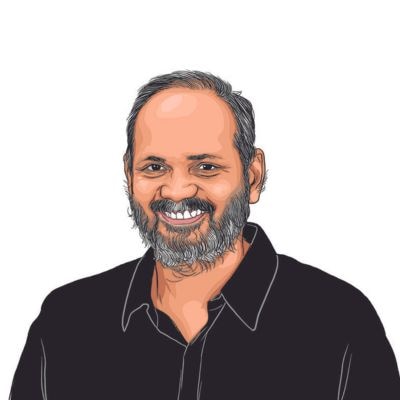Opinion Making films accessible to the disabled can serve everyone
There is compelling global evidence that media accessibility features are useful for all, including the hearing and the sighted, albeit in different ways. The Billion Readers initiative has shown that features like Same Language Subtitles or Captions will advance the reading literacy and language skills of one billion TV viewers
 Under the Rights of Persons with Disabilities (RPwD) Act, 2016, Bajaj is battling the entertainment ecosystem to make reasonable accommodations. (Representational Image)
Under the Rights of Persons with Disabilities (RPwD) Act, 2016, Bajaj is battling the entertainment ecosystem to make reasonable accommodations. (Representational Image) Sarah Sunny made history recently by becoming the first deaf advocate to use Indian Sign Language (ISL) to argue a case in the Supreme Court, in the presence of the Chief Justice of India. Soon thereafter, Rahul Bajaj, a blind advocate, made the case for media accessibility in cinema halls, in the Delhi High Court while two ISL interpreters made the proceedings accessible to Deaf and Hard of Hearing (DHH) persons. Under the Rights of Persons with Disabilities (RPwD) Act, 2016, Bajaj is battling the entertainment ecosystem to make reasonable accommodations.
While no stakeholder overtly disagrees with the need for media accessibility, the entertainment industry sees it as an onerous task for two reasons. One, media accessibility is only for the benefit of a small minority of hearing and visually impaired viewers but detracts from the experience of the overwhelming majority. Two, making films accessible on all the devices and platforms where content is consumed is complicated and costly.
Beyond the offensive portrayal of people with disabilities as a burden on the rest of us, these lines of argument rest on fundamentally flawed assumptions. Saying that media accessibility only serves DHH and visually impaired people is erroneous. There is compelling global evidence that media accessibility features are useful for all, including the hearing and the sighted, albeit in different ways. The Billion Readers (BIRD) initiative has shown that features like Same Language Subtitles or Captions (SLS/SLC) will advance the reading literacy and language skills of a billion TV viewers. Hearing viewers often use SLS in noisy environments — most homes — for improved media access.
BIRD’s surveys in rural government schools in several states have found that almost all children, parents and teachers prefer and want entertainment content with SLS. The industry may not have fully grasped the demand for SLS on video-based entertainment among India’s majority low-income viewers, including children, youth, and adults, who instantly see its value for furthering their own reading, language skills and education.
Achieving media accessibility across the entertainment system is not as complicated, or costly as the industry claims, if we adopt a systems approach. The entertainment industry encompasses the creation, distribution, and consumption of content in more than 23 Indian languages. The core idea in a systems perspective is that accessibility features should become an integral part of all content.
Video, for instance, includes separate files for the visuals and the audio. We propose the inclusion of accessibility features as separate files in the Digital Content Package (DCP). This is most cost-effectively achieved across platforms, channels and devices.
The prime advantage of marrying accessibility to content is that any stakeholder can turn the accessibility features on or off at practically no cost. Compliance with the RPwD Act and the Ministry of Information and Broadcasting’s (MIB) Accessibility Standards, 2019, then becomes a managerial decision.
MIB has oversight over all entertainment content, therefore, it would simply need to set guidelines and standards for content creation. For instance, the Central Board of Film Certification (CBFC) can require SLS/SLC and Audio-Description (AD) files to be deposited with CBFC, after a film has been certified. For the life of the film thereafter, the accessibility features can readily be turned on/off by any distribution channel, consumer, or device.
Cinema halls can schedule and announce special shows with SLS/SLC or AD. The deaf and blind then have the option of enjoying an immersive theatre experience. The decision to offer media accessibility on TV and OTT too becomes straightforward. In an earlier hearing, the Delhi High Court directed Yash Raj Films to deposit SLS/SLC and AD files for Pathaan, with CBFC. This needs to become the new norm for all films.
India’s disability rights groups are asking for four accessibility features to be included as separate files in any digital film package: SLC (SLS implied), AD, translated English captions/subtitles and ISL video interpretation for picture-in-picture display. Media accessibility becomes a default and choice in any content distribution and consumption scenario.
The first two accessibility features are critical. If MIB and CBFC simply require that SLS/SLC and AD files are deposited for every film, it will nudge the entire entertainment system to honour media accessibility.
According to WHO, “among those older than 60 years, over 25 per cent are affected by disabling hearing loss.” Right now, and in the future, all 1.4 billion Indians will benefit from media accessibility.
The writer is the Founder of PlanetRead and co-leads the Billion Readers (BIRD) initiative




